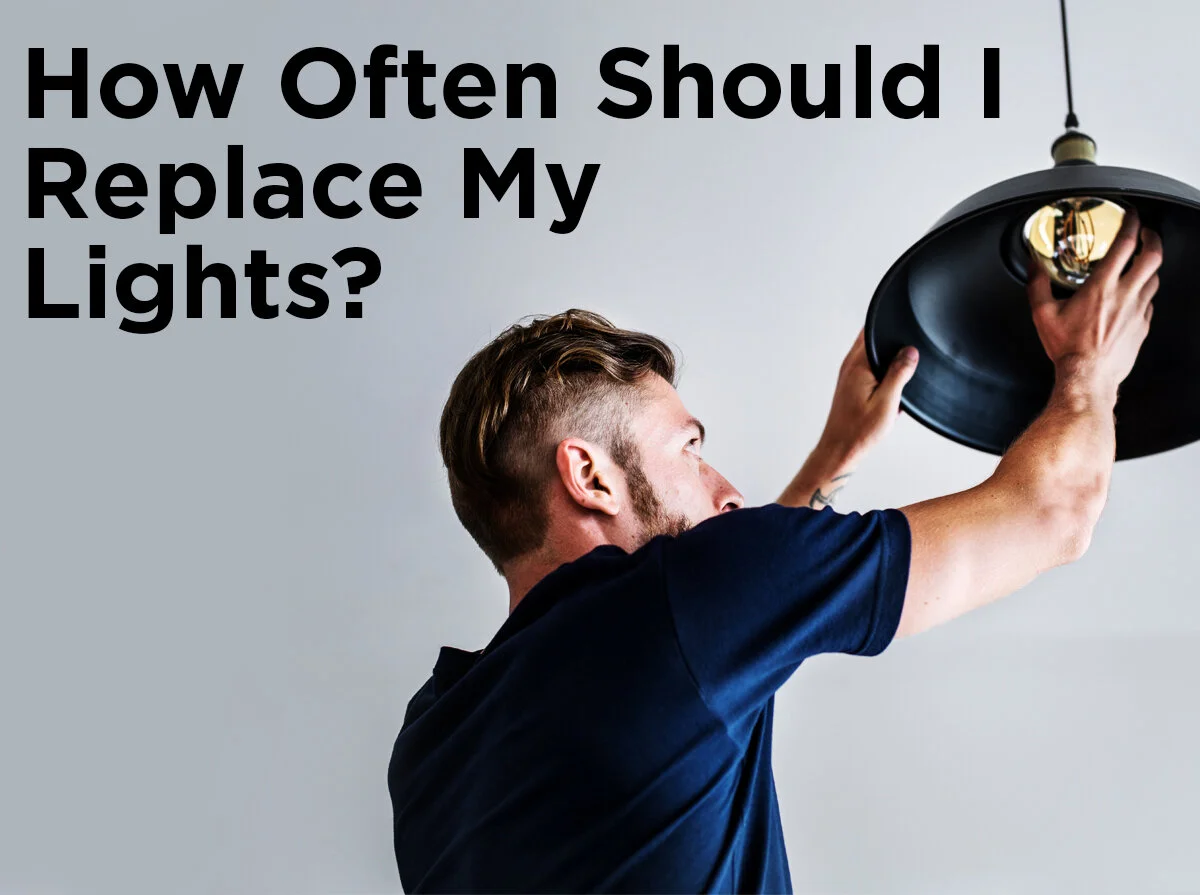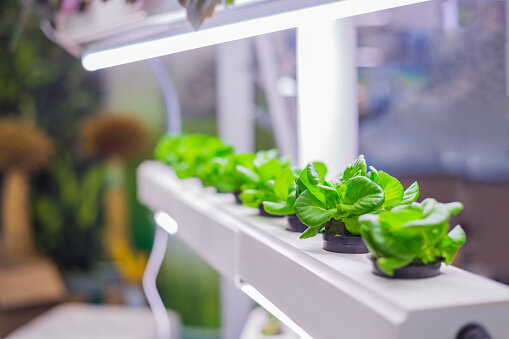How Often Should I Replace My Lights?
We know what you’re thinking. The simple and obvious answer is “whenever your light bulbs burn out.” However, we would like to discuss a couple of lighting caveats that could cause you to need to replace your lights sooner than you think.
The following table lists the accepted average life hours of different standard types of light bulbs.
| Light Source Type | Average Life Hours |
|---|---|
| Incandescents | 750 – 2,000 hours |
| Halogens | 2,000 – 4,000 hours |
| Compact Fluorescents (CFLs) | 8,000 – 12,000 hours |
| Fluorescents | 10,000 – 60,000 hours |
| HID (Metal Halide, HPS, and LPS) | 10,000 – 24,000 Hours |
| LEDs | 25,000 – 50,000 hours |
If your light bulbs outlast their average life span, then great! But if your light bulbs kick the bucket before you are ready, then it’s time to examine some underlying reasons. Sometimes, it’s not the bulb that failed, but other factors that caused its demise. Power fluctuations, corrupt or incorrect wiring, even faulty sockets could send your light bulb to the trash prematurely. We are no strangers to troubleshooting lighting gone wild and cover a multitude of lighting scenarios in articles like “Why Do My Lights Keep Burning Out?” and “HELP! My Lights Don’t Work”. Yet there are a few situations that can be avoided with a little lighting knowledge.
Lighting Tip: Replacing your incandescents and halogen bulbs with LEDs will save you money in the long run. The money you spend to power a 60-Watt incandescent bulb for the maximum 2,000-hour lifespan could pay the initial cost of purchasing an energy-saving LED.
Burnt Out Christmas Lights Can Cause Cascading Failures
We have established that Christmas string lights and patio stringers don’t function well past their maximum number of connected sets. But did you know that leaving burnt out bulbs in your incandescent light strings can cause a cascading failure? When you don’t replace the burnt out bulbs, the power that was being used by that bulb is transferred to the remaining lit bulbs. Eventually the increased power load will cause more bulbs to burn out and the frequency of the failures will escalate until you have more burnt out bulbs than lit ones. LED Christmas string lights don’t typically suffer from that particular issue. In fact since LEDs use far less power, LED light strings have been known to last 4 seasons (about 4,000 hours) or more compared to their 3,000-hours-or-less incandescent brethren. However, that long-lasting lifespan is nothing compared lifespan of just the diodes. The LED diodes in Christmas lights have been known to last approximately 75,000 hours. The wiring and fuses for those LED lights won’t survive nearly as long and their failure is the reason for the significantly shorter life hour average. The best advice is to buy backups at the same time you purchase your first set of LEDs light strings.
Excessive Heat Shortens Car Headlight Lifespans
Depending on when your car was made, your headlights are commonly one of three types: filament-based halogen lights, blue-tinged high intensity discharge (HID) or Xenon lights, or more recently, the crisp, bright light of LEDs. Halogen headlights may last 450 to 1,000 hours while HID lights average 2,000 to 3,000 hours. With such a lengthy lifespan, which translates to about 90,000 miles of usage, JD Power considers HID headlights a "lifetime" bulb that never needs to be replaced. LED headlights are fairly new to the auto industry and not much is known about their lifespan, except they can outlast the most efficient HID light. Regardless of which headlight you have, all of them are susceptible to heat. Excessive heat around a headlight can shorten the expected life hours. Halogen and HID headlights create large amounts of heat along with their light output. The heat of an LED headlight comes from its components, mainly the integrated driver, which is dissipated by a heat sink. If the heat sink fails to keep your headlight cool, then you won’t be driving anywhere at night.
When to Replace Grow Lights
Many indoor gardeners know that their grow lights depreciate or output less light over time, which can lessen your maximum crop yields and lengthen growing cycles. But whether you’re a budding hobbyist or a professional grower, determining when your lights need to be replaced requires a bit of forethought. Whether you’re using a metal halide (MH), high pressure sodium (HPS), or T5 fluorescent grow light, your lights will eventually dim due to external heat, the massive startup voltage from the ballast, or just standard wear and tear due to aging. To keep your crops consistently lush, you should replace your grow lights when the light output degradation is at 70 to 75%. In order to know what that magical number is, you will need a light meter to measure the light output of the bulb the very first time you turn it on. In subsequent months, you should continue to measure your bulb’s light output until it is down to half of your first measurement.
Due to the specific construction and components of an MH bulb, after 20,000 hours it will have depreciated nearly twice as much as an HPS bulb. As a general guideline, an MH bulb will reach that 50% light degradation mark in about 6 to 10 months, depending on how many hours per day it’s in use. An HPS bulb will last longer; the replacement time is every 10 to 14 months. T5 fluorescents will last the longest because their light depreciation is so slow. You won’t need a replacement bulb for about 18 to 24 months.
With your newfound lighting knowledge, go forth and replace bulbs with confidence! You can also ask more questions, leave a helpful tip, or make a suggestion in the comment area below. Find the latest in lighting news and ideas on our Facebook, Twitter, LinkedIn, or Pinterest.
Sources
http://auto.howstuffworks.com/under-the-hood/car-part-longevity/headlights-last.htm
http://maximumyield.com/blog/2015/08/01/how-to-tell-when-your-lights-need-replacing/
http://www.forevergreenindoors.com/wp-content/uploads/2015/03/Bulb-Depreciation-Is-No-Joke-Regular-Lamp-Replacement-is-Essential-Growers-House-Review-Lab.pdf
http://www.consumerenergycenter.org/lighting/bulbs.html






![Basic Air Quality Controls [Infographic]](https://images.squarespace-cdn.com/content/v1/56feae0ab6aa60ebb6039bf3/1609874872197-VPZHKK8F4D9PWH9QFD1E/air-quality-controls.jpg)


